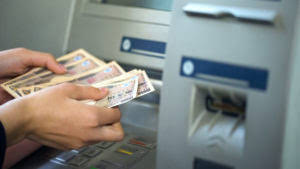
Various depreciation methods are available to businesses, each with its own advantages and drawbacks. One such method is the Double Declining Balance Method, an accelerated depreciation technique that allows for a more significant portion of an asset’s cost to be expensed in the earlier years of its life. The DDB method involves multiplying the book value at the beginning of each fiscal year by a fixed depreciation rate, which is often double the straight-line rate. This method results in a larger depreciation expense in the early years and gradually smaller expenses as the asset ages. It’s widely used in business accounting for assets that depreciate quickly. Double declining balance depreciation allows for higher depreciation expenses in early years and lower expenses as an asset nears the end of its life.
Adjustments and Exceptions in DDB Calculation

A disadvantage of the double declining method is that it is more difficult to calculate than the more traditional straight-line method of depreciation. Given the difficulty of calculation, this also means that it is easier to calculate the wrong amount of depreciation. Also, most assets are utilized at a consistent rate over their useful lives, which does not reflect the rapid rate of depreciation resulting from this method. Further, this approach results in the skewing of profitability results into future periods, which makes it more difficult to ascertain the true operational profitability of asset-intensive businesses.
Double Declining Balance Method Example
- Therefore, under the double declining balance method the $100,000 of book value will be multiplied by 20% and will result in $20,000 of depreciation for Year 1.
- We handle the hard part of finding the right tax professional by matching you with a Pro who has the right experience to meet your unique needs and will handle filing taxes for you.
- Financial accounting applications of declining balance are often linked to income tax regulations, which allow the taxpayer to compute the annual rate by applying a percentage multiplier to the straight-line rate.
- In the DDB method, the shorter the useful life, the more rapidly the asset depreciates.
- This method allows businesses to write off more of an asset’s cost in the early years, which can help reduce taxable income during those years.
- This not only provides a better match of expense to the car’s usage but also offers potential tax benefits by reducing taxable income more significantly in those initial years.
Like in the first year calculation, we will use a time factor for the number of months the asset was in use but multiply it by its carrying value at the start of the period instead of its cost. With the constant double depreciation rate and a successively lower depreciation base, charges calculated with this method continually drop. The balance of the book value is eventually reduced to the asset’s salvage value after the last depreciation period. However, the final depreciation charge may have to be limited to a lesser amount to keep the salvage value as estimated. In https://www.bookstime.com/ summary, the choice of depreciation method depends on the nature of the asset and the company’s accounting and financial objectives. If something unforeseen happens down the line—a slow year, a sudden increase in expenses—you may wish you’d stuck to good old straight line depreciation.

Step 1: Calculate the straight line depreciation expense
- This article is a must-read for anyone looking to understand and effectively apply the DDB method.
- Thus, an increase in the cost of repairs of each subsequent year is compensated by a decrease in the amount of depreciation for each subsequent year.
- When you’re a Pro, you’re able to pick up tax filing, consultation, and bookkeeping jobs on our platform while maintaining your flexibility.
- By mastering these adjustments, I can better manage my assets and their depreciation, ensuring that my financial statements reflect the true value of my investments.
- Owing to an increased rate of depreciation, it is termed accelerated depreciation.
- Accelerated depreciation techniques charge a higher amount of depreciation in the earlier years of an asset’s life.
As a prolific writer, she leverages her expertise in leadership and innovation to empower young professionals. With a proven track record of successful ventures under her belt, Erica’s insights provide invaluable guidance to aspiring business leaders seeking to make their mark in today’s competitive landscape. Yes, businesses can switch methods if they find Accounting Periods and Methods another one suits their needs better. Get started with Taxfyle today, and see how filing taxes can be simplified.

How to calculate the double declining balance rate?

Let’s assume that a retailer purchases fixtures on January 1 at a cost of $100,000. It is expected that double declining balance method the fixtures will have no salvage value at the end of their useful life of 10 years. Under the straight-line method, the 10-year life means the asset’s annual depreciation will be 10% of the asset’s cost. Under the double declining balance method the 10% straight line rate is doubled to 20%.

